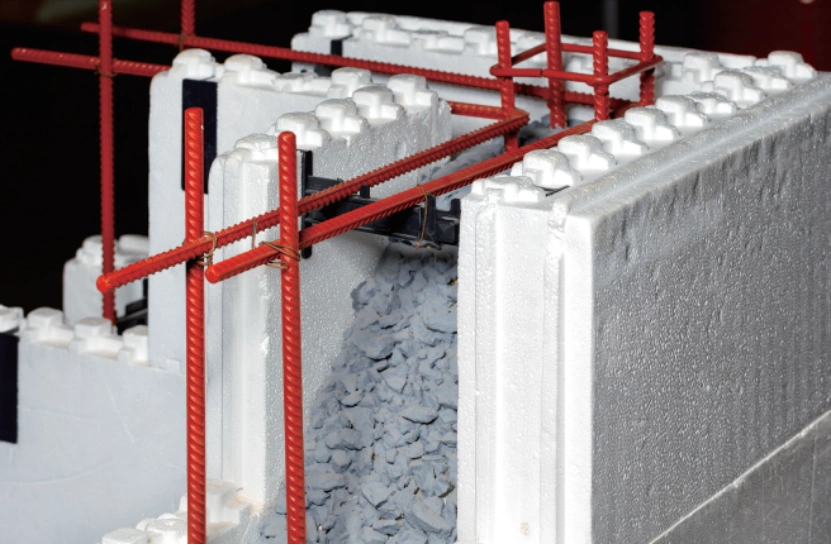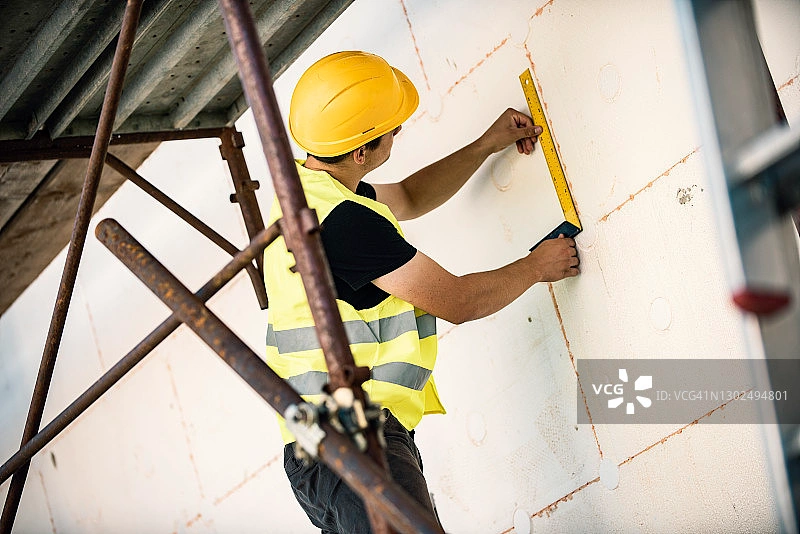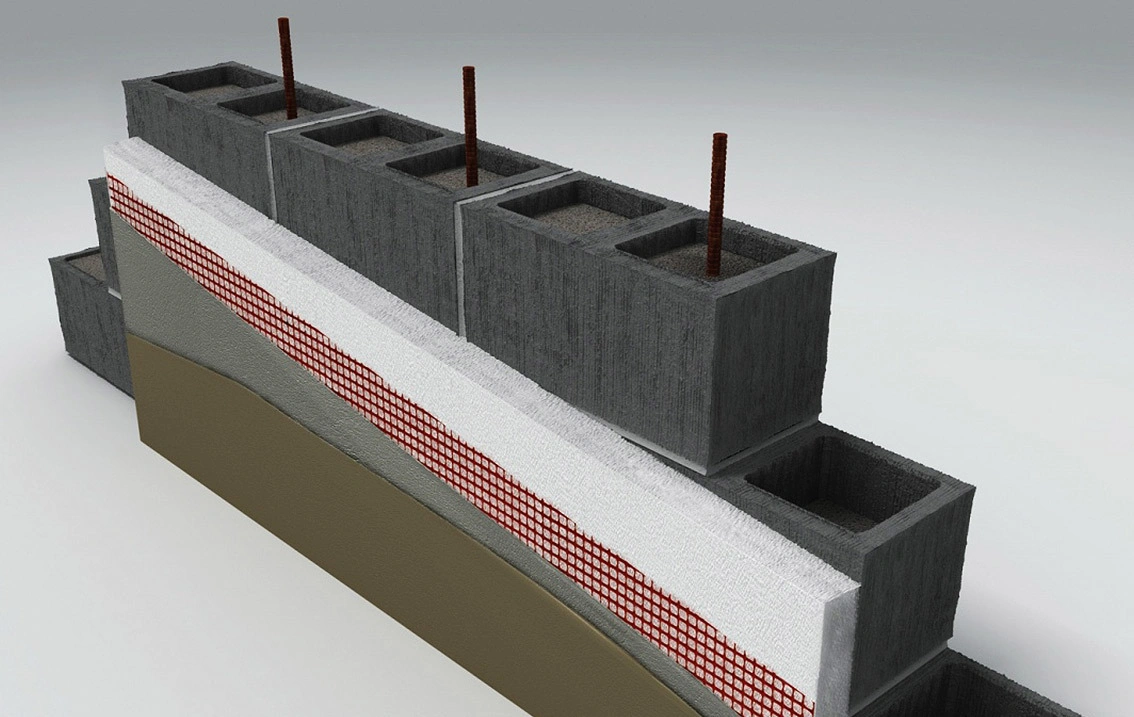Keeping water out is super important in modern building design. It helps buildings stay strong and save energy. Among building materials, EPS (Expanded Polystyrene) foam is a great choice for insulation and keeping moisture away. This article looks at how EPS rigid foam insulation helps with moisture in building envelopes. We focus on its features, how it works, and where it’s used.

The Role of Moisture Management in Building Envelopes
Good moisture control is key to keeping buildings tough, healthy, and energy-smart over time.
Importance of Controlling Moisture in Construction
Water sneaking into buildings can mess up insulation. It can lower indoor air quality. It might even lead to pricey fixes. If water gets into walls or roofs, it can harm parts of the building. It can also cause mold to grow. So, using materials that block water is a must for long-lasting performance.
Consequences of Poor Moisture Control on Building Performance
Buildings without good water barriers can face problems. They might lose heat through walls. Materials could break down. Mold or germs could grow. These issues make buildings less comfy. They also raise heating and cooling costs. This makes saving energy really hard.
EPS Foam as a Rigid Insulation Material
EPS foam is popular in homes, businesses, and factories. It’s light and awesome at insulating.
Key Properties of EPS Foam Relevant to Moisture Resistance
EPS foam is made of 98% air trapped in a closed-cell structure. This setup stops water from moving through it. Plus, EPS is great at keeping heat in or out. This helps buildings use less energy and stay dry inside.
Comparison Between EPS and Other Insulation Materials
Compared to fiberglass or mineral wool, EPS soaks up way less water over time. Some materials need extra layers to block water. But EPS naturally resists moisture because of its closed-cell design. It also keeps its insulation power better in wet conditions than many other materials.
Mechanisms by Which EPS Foam Resists Moisture
To understand how EPS keeps water out, we need to look at its structure and features that stop water from getting in.
Closed-Cell Structure and Its Impact on Water Absorption
EPS is made of tiny beads stuck together with steam. Each bead has closed air pockets. These pockets block water from passing through easily. This makes EPS great at stopping water flow and soaking.
Capillary Action and Vapor Permeability Characteristics
EPS doesn’t like water because of its closed-cell makeup. It doesn’t pull water in like spongy materials do. It also lets just a little water vapor through. This helps stop dampness from building up in walls. But it still allows walls to dry out. The Hydrophobic EPS emergency module (water absorption rate <0.5%) shows how special versions work great in wet or flood-prone areas.
Long-Term Dimensional Stability in Humid Conditions
EPS keeps its shape and size even in wet or humid conditions. It has a smooth surface and stays strong. Its size doesn’t change much. This makes it perfect for tough building spots where staying stable is important.
Performance of EPS Foam in Various Climate Zones
EPS insulation works well in all kinds of weather—from hot, humid places to freezing cold ones. It’s a flexible choice for projects worldwide.
Behavior in High-Humidity Environments
In rainy or coastal areas with lots of moisture, EPS keeps water out for a long time. It doesn’t break down. هواشنغ’s EPS material is great in density, strength, and heat insulation. It performs well no matter how wet the air is.
Performance in Freeze-Thaw Cycles and Cold Climates
In cold places with freeze-thaw cycles, materials must avoid cracking from ice. EPS has a low water absorption rate (<0.5%). It doesn’t hold enough water to freeze and break. This keeps buildings strong and energy-efficient for many years.

Integration of EPS Foam Into Building Envelope Systems
To work best, EPS must be put in walls, roofs, foundations, or other parts correctly. It needs to work with other materials and methods.
Application Methods for Walls, Roofs, and Foundations
EPS panels are often used outside in EIFS (Exterior Insulation Finishing Systems). They go under roofing membranes as flat boards or sloped ones for drainage. They’re also used around foundations where waterproofing below ground is key. The application area: building exterior wall insulation system shows how these methods improve whole-building performance.
Compatibility with Other Building Materials and Membranes
EPS gets along with most glues, sealants, and membranes (like bitumen or polymer-based ones). It works with concrete, gypsum boards, and more. It doesn’t react badly with them. This makes it easy to use in layered building setups without causing problems.
Enhancing Durability and Energy Efficiency with EPS
EPS offers two big benefits: great insulation and water resistance. This makes it super valuable for green building plans.
Contribution to Thermal Resistance While Managing Moisture
EPS has low thermal conductivity (as low as 0.032 W/m·K). The ultra-low thermal conductivity EPS box (λ=0.032 W/m·K) shows this. It also takes in very little water. This helps builders save energy and keep walls or attics free from mold-causing dampness.
HUASHENG provides top-quality EPS materials for many industries. Their recycled EPS foam supports green goals, showing how eco-friendly aims match technical needs.
Reducing Risk of Mold, Rot, and Structural Degradation
Dry building parts stop mold or mildew from growing. These thrive in wet places. EPS products have great impact resistance and toughness. They don’t like water, so they protect wood studs from rotting. This makes buildings last longer.
HUASHENG: مورد موثوق به لمنتجات EPS عالية الجودة
HUASHENG has lots of experience making eco-friendly EPS solutions. They offer recycled EPS foam and EPS foam beads for light, energy-saving uses. These are used in construction, packaging, logistics, medical cold chains, art projects, flood control systems, and more.
نظرة عامة على درجات منتجات HUASHENG
HUASHENG’s products meet specific project needs with special blends:
الصف المشترك للتطبيقات العامة
The E standard grade E-101 has a size of 1.30-1.60mm. It’s good for general packaging like electronics, ceramics, floats, or crafts.
Flame Retardant Grade for Fire-Sensitive Projects
The B1 flame-retardant EPS particles (density 22kg/m³) earned LEED Green Building Gold Certification. It’s great for fire-safe projects.
درجة الجرافيت لتحسين الأداء الحراري
Graphite-infused EPS boosts insulation by bouncing radiant heat away. It’s perfect for zero-energy buildings aiming for passive house standards.
Environmental Protection Grade for Green Building Needs
REPS is recyclable and fits international PS recycling category 6. It performs well and comes in bright colors.
Carbon Black Grade for UV Resistance and Aesthetic Applications
Carbon black EPS offers UV protection and looks nice. It’s great for exposed uses like decorative panels or art projects.
حلول REPS مخصصة مصممة خصيصا لمتطلبات المشروع
HUASHENG offers custom EPS on demand with fast responses. They make solutions for flood control or biopharma transport boxes. They recycle 300,000 tons of EPS yearly. Their products meet FDA, HACCP, and LEED standards worldwide.

استنتاج
Expanded polystyrene (EPS) foam is a top-notch material for keeping moisture out of building envelopes. Its closed-cell structure stops water from sneaking in, while its great insulation saves energy. EPS stays strong and stable, even in wet or freezing conditions, making buildings last longer. HUASHENG’s special grades, like Flame Retardant, Graphite, Environmental Protection, and Carbon Black, meet various needs while supporting green goals. Their recycled EPS (REPS) and custom solutions, like the E-101 or B1 flame-retardant particles, ensure top performance. As a trusted supplier, HUASHENG helps create durable, energy-smart, and eco-friendly buildings. EPS is a key player in building a sustainable future.
الأسئلة الشائعة
Q1: Is expanded polystyrene waterproof?
A: EPS isn’t fully waterproof like plastic sheets. But it’s very water-resistant. Its closed-cell structure stops most water from getting in. The Hydrophobic EPS emergency module (water absorption rate <0.5%) proves this in uses like flood control systems.
Q2: Can I use EPS foam insulation below grade?
A: Yes! EPS has a low water absorption rate and stable size. HUASHENG’s EPS material is great in density for foundations. It’s often used around basements or under slabs where soil touches it.
Q3: How does recycled EPS compare with virgin material?
A: HUASHENG’s REPS is just as strong and tough as new material. It uses 100% recycled raw materials. It cuts energy use by about 30%. This makes it a top pick for green projects aiming for circular economy goals.






